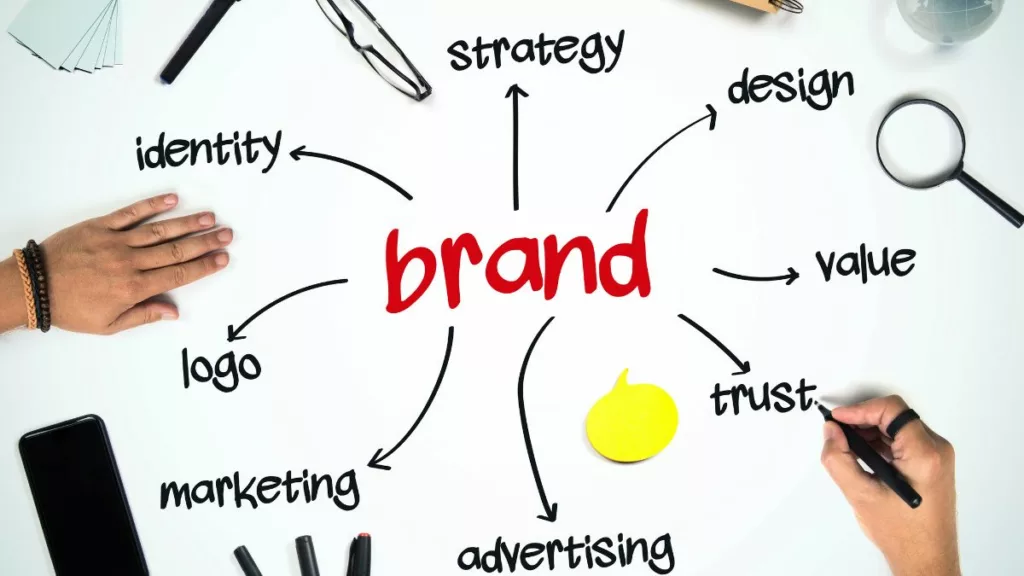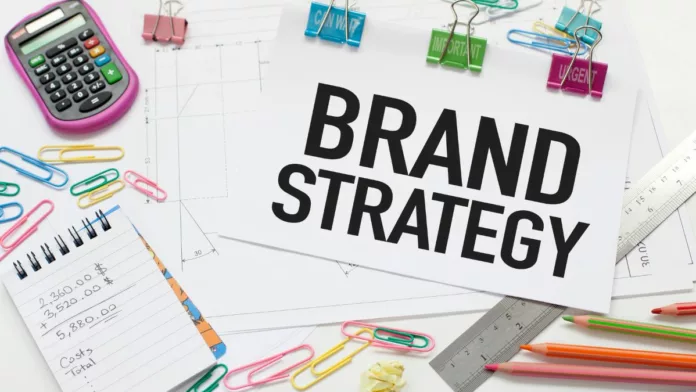Think of your favorite brand. What attracts you to it?
Maybe you love the mission of the brand, or the unparalleled quality of the products. Perhaps the product solves your main problem. What unites all these signs? They are associated with the development of the brand.
You have an idea about your favorite brand that makes you return to it again and again. Apparently, we are dealing with a strong brand development strategy. But it is important to understand that brand development is more than just creating a logo and choosing a color scheme.
Creating a successful brand development strategy is not an easy task, but with the right planning and execution, it can be done. In this article, we will discuss what brand development is, what you need to do to develop your own brand development strategy, how best to develop digital brands, and how a brand strategy manager is involved in all of this.
Table of Contents
What is brand development?
Brand development is a multi-step process that builds customer awareness of your services or products and sets you apart from the competition. The strength of your brand goes a long way in building reputation and building audience awareness.

Of course, the logo, slogan, and corporate colors are important for a brand (you can’t confuse Nike, Coca-Cola, or Google with anything), but brand development is much more than visual elements. For the successful development of the brand, it is important that customers perceive the ethics and values of the company.
How to start developing a brand development strategy?
So, you are sure that you need a brand development strategy, but you do not know where to start yet. Whether you are starting a brand strategy from scratch, or want to go through the process of developing a brand strategy from start to finish, follow these steps.
1. Understand what is behind the business
First of all, you need to clearly understand and be able to convey to the audience the beliefs and values that your business adheres to. It is the foundation without which the building will not stand the test of time. This also applies to the brand.
Thinking about what should be the basis of your message, formulate:
- Purpose. What is the purpose of our business? Why does our company exist?
- Vision. How do we imagine the future? How will we create this future?
- Mission. Why do we exist? How do we serve our audience?
- Values. What guiding principles guide our business? What do we believe? What are we standing for?
To formulate a message for implementing a brand development strategy, you need to identify the above elements. You will know why the company exists and how to communicate this to current and future customers.
2. Know your audience and identify your target customer
Once you understand what’s behind the business, you can use that knowledge to figure out who your brand’s target audience is. Part of a brand development strategy is to study your audience, establish who your consumer is and what they need, and learn how to best serve customers.
You can explore and gather feedback through surveys, customer testimonials, social media, focus groups, or interviews to understand and define your current consumer group. When collecting feedback, pay special attention to what problems the client solves, what goals they achieve, and how your product or service helps them achieve this.
Create so-called. ” Marketing Personas ” to describe your ideal customer – this will help you connect more closely with potential customers. The best marketing personas are well-described and well-researched fictional characters that are malleable enough to be adjusted as needed.
As you think about your audience, ask yourself the following questions:
- Why is your potential client contacting you?
- How does the customer use your product or service?
- What problems of your potential client are you helping him solve?
3. Know your opponent
In the process of developing a brand development strategy, it is important to find out what makes you different from your competitors. Your brand needs to stand out from the competition in order to grab the attention of potential customers and retain existing customers.
It is important to study and understand well what your competitors are doing in order to understand what exactly you will do differently in order to stand out from them.
4. Develop a corporate identity and brand positioning
Brand identity embodies the unique personality of your business and the lasting impression you make on your customers. It includes the visual elements of your brand, such as your logo, colors, and other rules for using your brand. Research shows that choosing certain brand colors can increase brand awareness by up to 80%, so choose them wisely.
Brand positioning helps set your business apart from your competitors. These building blocks of your brand help define the overall message and tell customers about yourself.
At this stage, you should also think about your website, content marketing strategy, marketing toolkit, or related materials that you will be creating and distributing. All of these elements are an important part of your message to your customers and your brand development strategy.
5. Implement, control, and adjust the brand development strategy
It’s time to launch your brand! Once your plan is in place and all the details are in place, the next step is to show the world your brand.
To test if your strategy is working, you must start implementing it, monitor its progress, and make adjustments as needed. A winning brand development strategy is not created immediately. Be patient, flexible, and optimize your strategy as you go.
Best Tips for Creating a Brand Development Strategy
A digital brand strategy is how you communicate and share your brand with online consumers. In the digital world, the goal of your strategy is to convert into sales and increase customer loyalty.
A digital brand strategy can include digital marketing tactics such as SEO and content marketing, email marketing, online advertising, and a website.
Why is all this important? Research shows that 88% of consumers research online choices before making an online or offline purchase, which means your digital presence is very important. Here are three tips for building a digital brand strategy:
1. Priority to website
Your customers will most likely try to find your website on the Internet.
Your website should not only reflect your corporate identity and positioning, but also convey the right information to your target audience. A website that doesn’t match your offline branding can discredit your message and cause customers to lose trust in your brand. Create a website that is attractive, informative, and talks about your business and the customer problems you solve.
2. Use buyer personas to reach customers
If you have researched and defined your audience, you have buyer personas that you can use as part of your brand’s digital strategy.
Knowing who your customers are, think about where you can find them online – through organic search, social media ads, mailing lists, etc. You can use this information to select channels to reach those segments of your audience where your message is most likely to resonate.
Your SEO strategy and online advertising help you quickly connect with potential customers and buyers, which is vital in a digital space that offers buyers a huge selection of products and services.
3. Work on your social media presence
It’s no secret that social media is an integral part of your online brand, which means it should be part of your brand’s digital strategy.
Go beyond creating profiles on social networks – actively interact with subscribers. Create a space where your clients and potential clients can interact with you.
If you want your brand to stand out on social media, develop your own tone of voice, types of posts, consider whether you will use emoji. A holistic approach will help you build your digital brand on this channel.
What does a brand strategy manager do?
Who is leading the strategy? Of course, brand strategy manager.
The Brand Strategy Manager (aka Brand Development Manager) develops brand strategy and is responsible for a wide range of tasks including branding, online and offline promotions, market research, and marketing campaigns. Marketing campaigns strengthen brand awareness and reputation in the market.
Here are some of the responsibilities of a brand strategy manager:
- Determine the current positioning of the brand in the market and find areas for improvement
- Conduct consumer and market research
- Develop brand strategy based on market research and data
- Disseminate brand information internally to ensure brand integrity
- Develop and execute marketing campaigns aimed at promoting and strengthening the brand
Brand strategy managers work with the stakeholders of the entire company, they manage the entire branding of the company.

